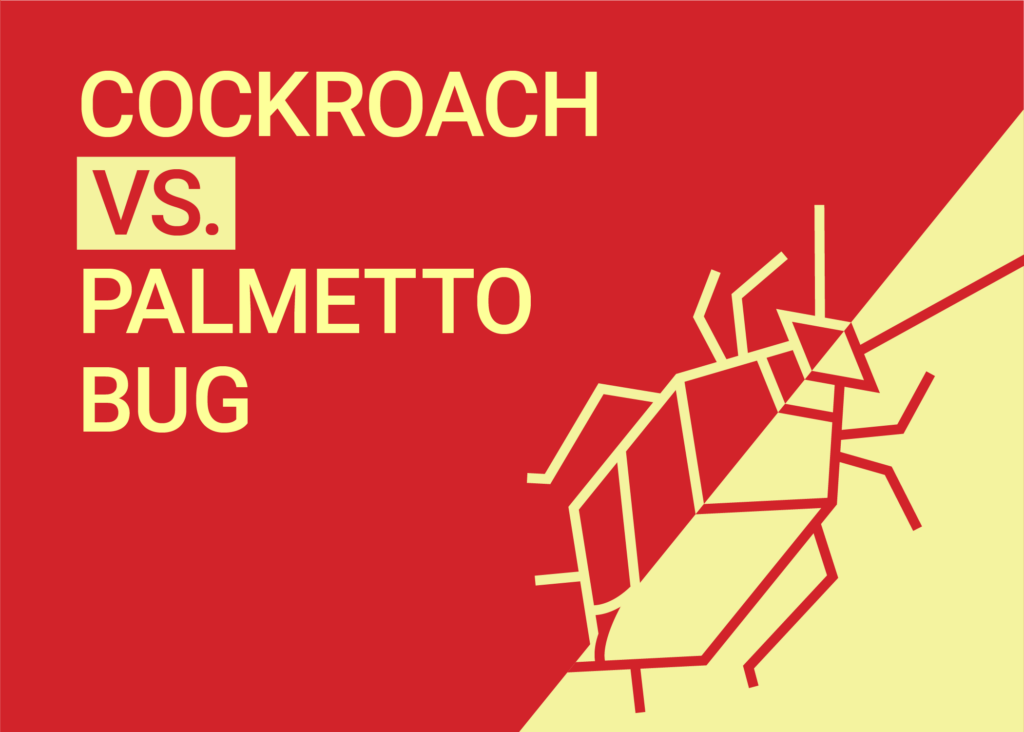
If you live in the southeastern United States, you may have heard of a palmetto bug. You also may have heard of them in relation to a cockroach infestation. So what exactly is a palmetto bug, and how is it different from a cockroach?
Cockroach Vs. Palmetto Bug
The truth is that in many ways, a palmetto bug is the same thing as a cockroach. The two names tend to be used interchangeably, which can lead to confusion when discussing pests. Since there are over 4,500 different species of cockroach, and all of them have different sizes, shapes and colors, it can be difficult to determine what kind of cockroach has been spending too much time in your home. Several cockroach species are commonly referred to as palmetto bugs, so while all palmetto bugs are cockroaches, not all cockroaches are palmetto bugs.
American and Smokybrown Cockroaches
Of the two main cockroach types that are commonly called palmetto bugs—American and smokybrown cockroaches—the smokybrown cockroach has the most valid claim to the name palmetto bug. It usually grows up to an inch and a half long (which is fairly large for a cockroach) and is darker brown in color than the American cockroach, which is reddish-brown with a yellow pattern on the back of its head. Both types of cockroaches also have wings.
Smokybrown cockroaches can be found as far south as Florida and as far west as Texas (and sometimes even California). They are often called palmetto bugs because of their association with the palmetto tree, a tree with fan-shaped leaves in which they sometimes take refuge.
Palmetto bugs in the home
Palmetto bugs, or smokybrown cockroaches, tend to be attracted to locations with high moisture and humidity, which is one reason why they are so prevalent in the southeastern United States. Within the home, they may be found in bathrooms, kitchens, attics/crawl spaces and trash bins. Outdoors, they are known to make their homes in leaf piles, mulch and other organic waste.
Because they’re so small and flat, they can easily find their way into the home through holes, cracks and crevices. To prevent them from entering, find ways to seal off whatever holes outside your home that you can find. Try to keep the surfaces of your home as dry and clean as possible so as to not provide a potential food source that would attract a smokybrown cockroach. Also, keep excess vegetation like mulch piles, bushes, leaves and tree limbs trimmed and away from the walls of your home.
Palmetto bugs are not a sign of a dirty home, just as any other cockroach is not. Cockroaches aren’t picky where they live, as long as they have a food and water source. However, since they are known to live in areas where a lot of filth is present, such as sewers and refuse piles, do your best to avoid contact with them. They can potentially spread disease and affect allergies. Palmetto bugs/smokybrown cockroaches are also known to bite, though their bite doesn’t cause much more than skin irritation.
What to do about an infestation
Unfortunately, most DIY methods of pest control besides the preventative measures we’ve already listed will not completely eradicate cockroaches. They are resilient, hardy creatures, and they know how to hide and get away from home remedies. If you think you may have a cockroach/palmetto bug infestation, it may be time to call the professionals. Contact us today for a free inspection!
